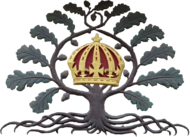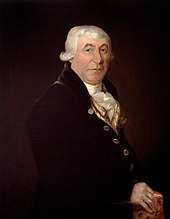Lower Canada Tories
This article needs additional citations for verification. (February 2022) |
| |
|---|---|
| Founded | Early 19th century |
| Dissolved | 1855 (approximate) |
| Succeeded by | None |
| Ideology |
|
| Colony | Lower Canada, British North America |
Lower Canada Tories is a general name for individuals and parliamentary groups in Lower Canada, and later in the Province of Canada's division of Canada East,[1] who supported the British connection, colonialism, and a strong colonial governor.[2]: 326 They generally favoured assimilation of French-Canadians to British culture, laws, and the English language, and opposed democracy.
| Part of the Politics series on |
| Toryism |
|---|
 |
Château Clique

The Château Clique, or Clique du Château, was a group of wealthy families in Lower Canada in the early 19th century. They were the Lower Canada equivalent of the Family Compact in Upper Canada.
Like the Family Compact, the Château Clique gained most of its influence after the
Parliamentary groups
They were also known on the electoral scene as the Parti bureaucrate (Bureaucratic Party), also known as the British Party or the Tory Party.
Constitutional framework
The
Lower Canada Rebellion
Louis-Joseph Papineau, as a reformer in the Assembly, was one of the fiercest opponents of the Château Clique. His struggles against the Clique and the Lieutenant Governor, Lord Gosford, led to the Lower Canada Rebellion in 1837.
After the rebellion, Upper and Lower Canada were united as the Province of Canada, but the Château Clique did not disappear like the Family Compact. While the English-speaking population became the majority, the British-appointed governors still attempted to force the French Canadian population to assimilate. Canada East, as Lower Canada was called after the union, eventually gained some political independence with the union government of Robert Baldwin and Louis-Hippolyte Lafontaine.
Other members
- Edward Bowen
- Horatio Gates, banker
- Peter McGill
- William McGillivray, fur trader
- Jacob Mountain, Archbishop of the Anglican Diocese of Quebec
- Jonathan Sewell, member and Speaker of the Legislative Council of Lower Canada
- Charles James Stewart, Archbishop of the Anglican Diocese of Quebec
